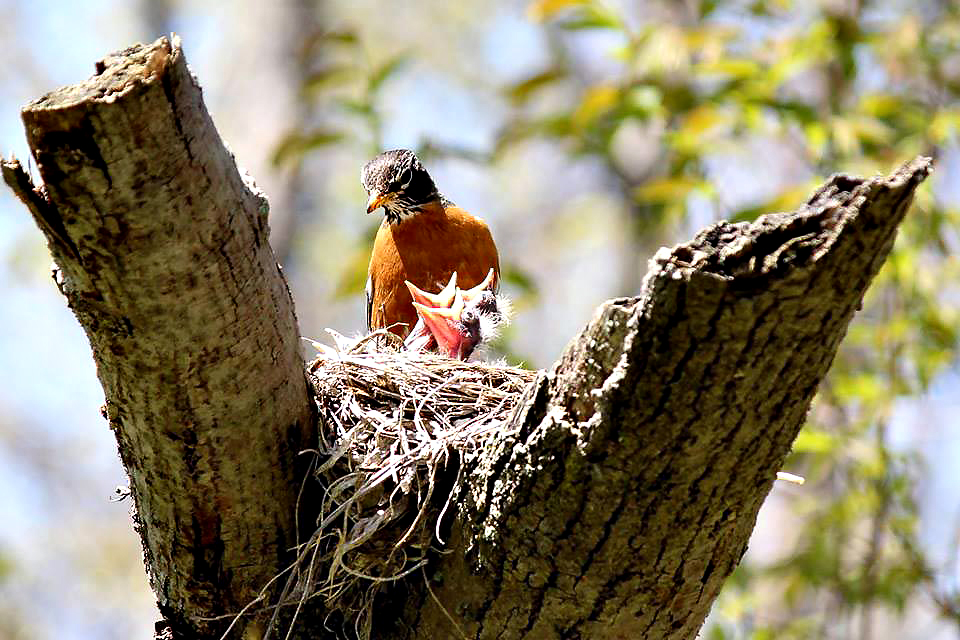
One thing I hear every spring is “I found a baby bird, what do I do?” Most of the time the answer is to simply leave it alone. At some point, most of us have come across this situation. We see a baby bird in the grass, hopping about as though it has been abandoned. Our instinct is to help but in most cases, help is not necessary. Intervening can make the situation worse, often leaving the baby in a more dangerous situation
The most important thing is to be able to recognize whether this bird you have found is a hatchling or a fledgling.
A hatchling is a baby that is pink with no feathers and will certainly not be hopping. This baby has likely fallen or been blown out of a nest, perhaps even dropped by a failed predatory attack. If you are able, place the baby back into the nest (it’s usually very close by if you look carefully). The idea that human scent will cause the mother to abandon its young is absolutely not true. Birds, unlike mammals have a very poor sense of smell and find their babies based on their calls. Once the bird is back in the nest, watch to make sure that an adult bird is checking on it.
A fledgling is a baby who has some feathers and is hopping around. Fledgling birds are those that have left the nest to learn how to stretch their wings, forage for food and learn to fly. Most birds are only in their nest 2-3 weeks before they make the great escape. A fledgling on the ground means that mom is close by, keeping her eye on her young one. Parent birds begin feeding their young less often which forces them to have to learn how to fend for themselves. There is rarely a reason for us to get involved. A fledgling will spend days to weeks on the ground waiting for its feathers to develop. Nobody can care for a baby bird like its mother. Removing a fledgling from the ground without the need to will drastically reduce its chances of survival.
So how do you know if everything is ok? Let’s start by looking for what might not be ok.
Do you see blood or an open wound?
Does the bird seem injured (lying on its side, unable to move)?
Did you see mom get killed?
Is the baby in imminent danger (is your cat outside)?
All of these situations would require for you to contact or take the bird to a wildlife rehabilitator. The best place to find a rehabber is at https://www.ontario.ca/page/find-wildlife-rehabilitator
NEVER try to care for a bird yourself. Proper nutrition is imperative for optimal health and only the mother bird can provide exactly what it needs. Nutritional requirements are different for each species so don’t assume you know what kind of bird it is. Feeding a seed eater meat can be toxic. Their metabolic needs must come first Even a single drop of water given incorrectly can cause aspiration and likely lead to death. All you need to do is put the bird in a small box with something soft like a facecloth or paper towel and keep it warm.
If you do not see any obvious peril, wait. It is important to note that most baby birds look nothing like their parents. Watch for a bit and see if an adult bird appears to be checking on the young one.
